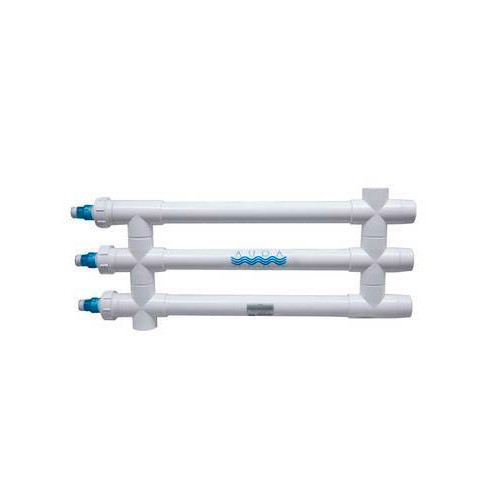Hello all,
I have a 280 gal DT with a 60 gal sump. I have a velvet outbreak lost some fish. I have setup a QT's purchase new fish and qt them with 30 days copper and prazi treatment. The DT was fallow for 89 days. So i assumed that the parasite have died/starve due to no fish being present. The new fish that were QT are
2 achillies tang
1 hippo tang
1 mimic tang
1 fox face
1 bi colored chromis
1 exquisite fire fish
1 blue azure
2 lyretail 1male 1 female
the fox face is the only fish that survived my velvet outbreak all other fish are new and never been in the DT. I got them from the fish store and put directly into qT. As mentioned all fish were copper and prazi for over 30 days and now white spots (that i could see) were on the fish.
Now after the QT process was finished and fallow period was completed. I put the fish into DT and after about a 1 week - 2 weeks. The achillie tang start to show ich on him.
I was shocked. I purchase a hugh uv sterilizer an aquauv 120 watt. @ 1360 gph would give me 90k ok killing power. But i believe my water flow is too slow and im am unable to get ahead of this outbreak. Every morning it seem they are looking worst even with the UV on 24/7 and big water changes 200 gal/week.
I have also trying Polyp Lab Reef Safe Medic currently at 3 triple dose. But it doesn't seem to be working.
Im also getting a more powerful pump to increasing flow through the uv.
But im thinking that im gonna have to start taking all the fish out again and QT.
Do anyone have any other methods that would help?
I see post all the time of people trying different stuff and saying that they have had success. But so far i have had no success even with QT. I hate to start fallow all over again. But it looks like this is what im gonna have to do.
I will post some pics later on so everyone can see how bad the ich is. Seem like the achillies tang are taking the brunt of it.
I have a 280 gal DT with a 60 gal sump. I have a velvet outbreak lost some fish. I have setup a QT's purchase new fish and qt them with 30 days copper and prazi treatment. The DT was fallow for 89 days. So i assumed that the parasite have died/starve due to no fish being present. The new fish that were QT are
2 achillies tang
1 hippo tang
1 mimic tang
1 fox face
1 bi colored chromis
1 exquisite fire fish
1 blue azure
2 lyretail 1male 1 female
the fox face is the only fish that survived my velvet outbreak all other fish are new and never been in the DT. I got them from the fish store and put directly into qT. As mentioned all fish were copper and prazi for over 30 days and now white spots (that i could see) were on the fish.
Now after the QT process was finished and fallow period was completed. I put the fish into DT and after about a 1 week - 2 weeks. The achillie tang start to show ich on him.
I was shocked. I purchase a hugh uv sterilizer an aquauv 120 watt. @ 1360 gph would give me 90k ok killing power. But i believe my water flow is too slow and im am unable to get ahead of this outbreak. Every morning it seem they are looking worst even with the UV on 24/7 and big water changes 200 gal/week.
I have also trying Polyp Lab Reef Safe Medic currently at 3 triple dose. But it doesn't seem to be working.
Im also getting a more powerful pump to increasing flow through the uv.
But im thinking that im gonna have to start taking all the fish out again and QT.
Do anyone have any other methods that would help?
I see post all the time of people trying different stuff and saying that they have had success. But so far i have had no success even with QT. I hate to start fallow all over again. But it looks like this is what im gonna have to do.
I will post some pics later on so everyone can see how bad the ich is. Seem like the achillies tang are taking the brunt of it.



















